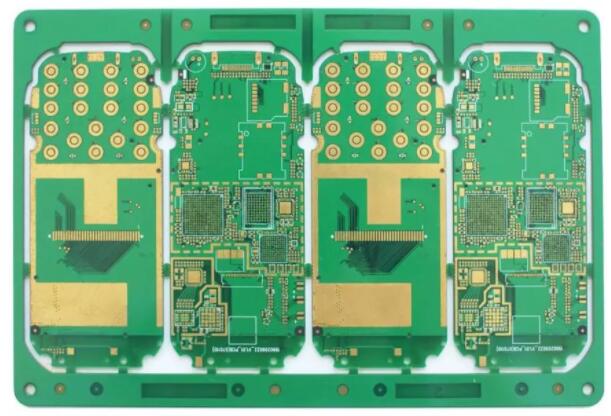What is a cable
Cable, also called flexible circuit board (FPC). It is used for data transmission in moving parts and active areas in accordance with the regulations of the industry's specifications, such as the wiring rules, line sequence, line color, and line number. Data cables and data cables between connected devices are collectively referred to as flat cables. The flat cable is mainly divided into two types: round head at both ends (referred to as R-FFC, used for direct welding) and flat at both ends (referred to as FFC, used to insert sockets). It is most suitable for data transmission cables between moving parts and motherboards, between board to board, and miniaturized electrical equipment. Because the price of FFC cable is better than FPC (flexible printed circuit), its application will become more and more widespread. In most places where FPC is used, FFC can basically be used instead.
The characteristics of the cable
1. The cable is small in size and light in weight. The original design of the cable board is to replace the larger wire harness. On the current cutTIng-edge electronic device assembly board, the cable is usually the only solution to meet the requirements of miniaturization and mobility. Cables (sometimes called flexible printed circuits) are copper circuits or printed polymer thick film circuits etched on a polymer substrate.

For thin, light, compact and complex devices, the design solutions range from single-sided conductive lines to complex multilayer three-dimensional assembly. The total weight and volume of the cable are reduced by 70% compared to the traditional round wire harness method. The cable can also increase its strength by using reinforced materials or liners to obtain additional mechanical stability.
2. The cable can be moved, bent, twisted without damaging the wire, and can comply with different shapes and special package sizes. The only limitation is the volume space issue. Since it can withstand millions of times of dynamic bending, the cable can be well applied to the interconnection system of continuous movement or regular movement, and become a part of the function of the final product. The solder joints on a rigid PCB are subjected to thermal and mechanical stress and will fail after hundreds of cycles. Jenny, EECX’s product manager, said: “Requires electrical signals/power to move, and certain products with smaller form factors/package sizes benefit from flat cables.”
3. The cable has excellent electrical properties, dielectric properties and heat resistance. The CEO of LT Electronic said: "The lower dielectric constant allows fast transmission of electrical signals; the good thermal performance makes the components easy to cool down; the higher glass transition temperature or melting point makes the components operate well at higher temperatures."
4. The cable has higher assembly reliability and quality. The cable reduces the hardware required for internal connections, such as solder joints, relay lines, backplane lines and cables commonly used in traditional electronic packaging, so that the cable can provide higher assembly reliability and quality. Because the traditional interconnected hardware composed of multiple complicated systems is prone to high component misalignment rate when assembling. Ping.Wu, marketing manager of EECX Electronic Products Division, said: "The cable has low rigidity and small size. It is precisely because of the small size of the cable board components that the material used is less." With the emergence of quality engineering., A very thin flexible system is designed to be assembled in only one way, thus eliminating many of the human errors usually associated with independent wiring projects.
Features of the cable
What is FFC cable
FFC cable is also known as: flexible flat cable. The number and spacing of wires can be selected arbitrarily, which makes the connection more convenient, greatly reduces the volume of electronic products, reduces production costs, and improves production efficiency. It is most suitable for moving parts and motherboards. The PCB board is used as a data transmission cable between the PCB boards and in the miniaturized electrical equipment. Common specifications include various pitch flexible cables such as 0.5mm, 0.8mm, 1.0mm, 1.25mm, 1.27mm, 1.5mm, 2.0mm, 2.54mm, etc.
Ffc cable
What is FPC cable
FPC cable is a cable group that can be bent to a certain extent. FPC can be divided into many types according to function, such as FPC antenna, FPC touch screen, FPC capacitive screen, etc. FPC cable is one of them. The function of the FPC cable is to connect two related parts or products. Nowadays, many products have used the flat cable, because it has a certain degree of flexibility, FPC flat cable has been used in many products such as printers, mobile phones, and notebooks.
Fpc cable
The difference between FFC and FPC cable
FPC is Flexible Printed Circuit flexible printed circuit. From their manufacturing, the way they are formed is different:
1. FPC is to process FCCL (flexible copper clad foil) by chemical etching to obtain flexible circuit boards with different circuit layouts, single-sided, double-sided, and multilayer structures.
2. FFC is a flat copper foil sandwiched between upper and lower insulating foil films. The finished product is simpler and thicker.
From the price point of view, naturally FFC cables are much cheaper. Considering the production cost, more companies prefer to use FFC cable related designs.